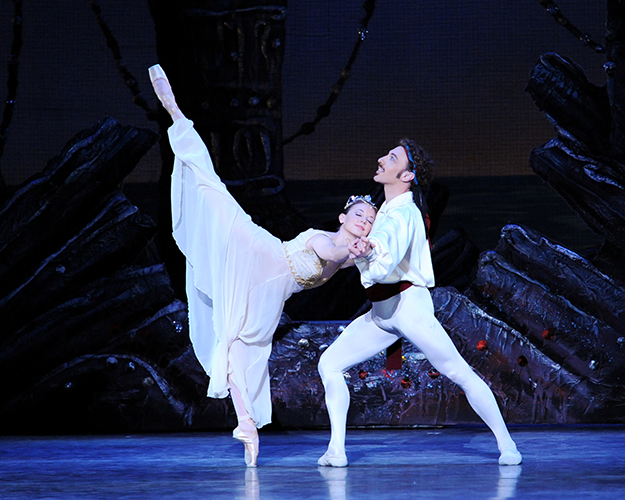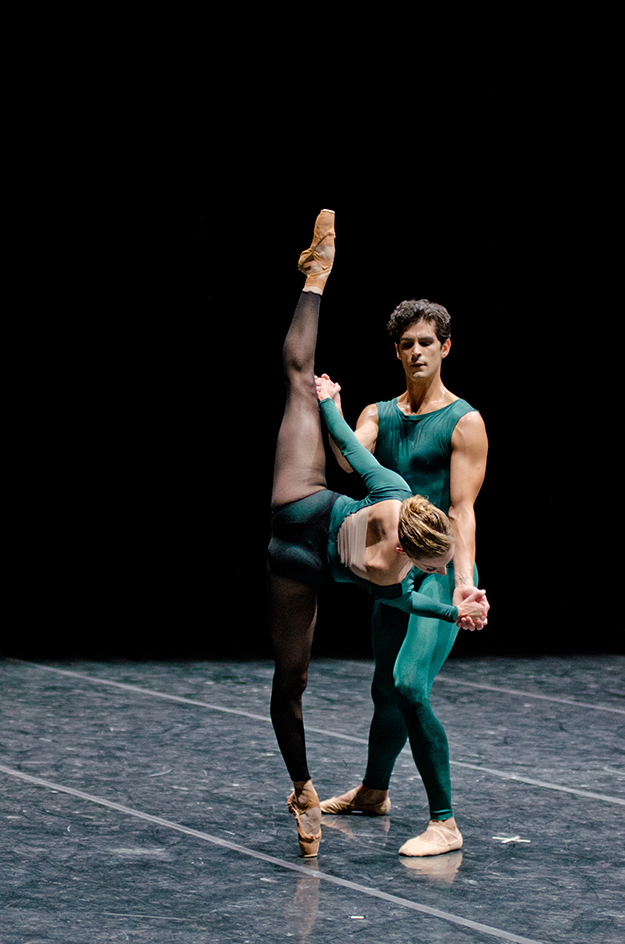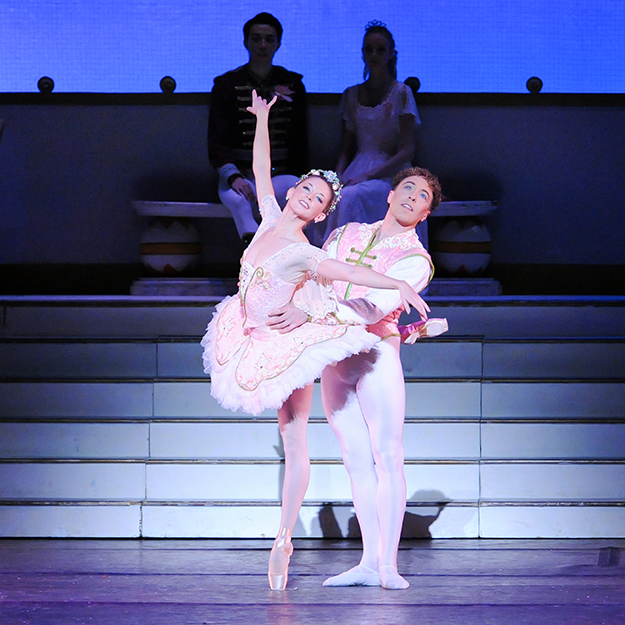Staying in Line
by Alexandra Kochis, principal dancer, Pittsburgh Ballet Theatre
This piece was inspired by the Society for Contemporary Craft’s ongoing Edward Eberle Retrospective. See Alexandra’s insights on display at SCC in an exhibit encouraging other artists to play off artist Edward Eberly’s use of intuitive line as base. Through March 11, in the center’s main gallery. Find details here.

Alexandra Kochis & Christopher Budzynski | Photo by: Rich Sofranko
I find the concept of ‘Line’ and ballet are inexorably entwined. Dance, and classical ballet in particular, is designed to maximize the continuation of the lines formed by the body – an arm, a leg, the line of the neck as it bends from the cheek to the shoulder – all the way down to the very literal tip of a finger or toe. It is the underlying credo of the art form that a clean, continuous and unbroken line is more beautiful, more harmonious and continues the energy of the muscles and the movement out into space.
My concept of line has evolved somewhat on my journey from student to professional. What started off as a study of positions, has morphed into something that has much more a feeling of innate life. Line comes not just from the position of my arm or head but from the energy that is generated within and spirals upwards and outwards from my very core. I try to then project this line of energy, focusing it in my gaze and continuing it through my limbs – outwards to infinity. To liken it to something a bit more everyday, I would say it is like when you are driving at night in the rain. If you squint your eyes a bit all the lights are softened and expanded with a glowing center and long, trailing lines extending outwards from the source – carrying that light’s energy beyond a single point of punctuation, giving it new shape and new depth. An image of non-traditional line that I have tried to harness recently in my own practice is that of the swirling arrows on a tidal map. The currents and eddies of energy spiral around, entwine and glance off one another in a state of perpetual regeneration and redirection.

Alexandra Kochis & Alejandro Diaz | Photo by: Rich Sofranko
If we talk about line as a conceptual point in a piece of choreography, it can come in many forms. It can be smooth and legato – drawn out and elongated in a continuous line. It can be sharp and staccato – with arms and legs punctuating the space more forcefully and, more recently perhaps, choreographers have begun playing with the idea of broken line, in which the unexpected bend or snap of a line is the point of interest in the movement. Just as one has a hard time taking one’s eyes off the unnatural crook formed by the wing of a bird who has fallen from flight, an observer gleans a certain mental stimulus from an incongruous line formed unexpectedly within choreography.
For me, as I think it is with most professional dancers, a piece is never done. You can always improve – push the line farther, suspend the balance longer, make things smoother, more real. I worked with one choreographer who said we should never expect one performance to be identical to another. A performance is a unique creature that we are all – the performer, the musicians and the audience – experiencing together for this one fleeting moment. It will live and it will die on that one day. I have tried to take this advice to heart and, in fact, apply it even to my daily work in the studio. I take solace in this idea and use it as an emancipation of sorts to let the energy of the moment inform my creativity.

Alexandra Kochis & Christopher Budzynski | Photo by: Rich Sofranko
